How to grow an indoor herb garden is easier than you think!
This simple guide for beginners will show you exactly how to grow and create a thriving kitchen garden you can enjoy year-round.
With just a little sunlight and care, you’ll have homegrown herbs ready to snip anytime you need them.
Want more gardening info? Don’t miss my other Backyard Gardening Tips! You’ll find plenty of easy ideas to help you grow fresh produce and bring more garden goodness to your family’s table.
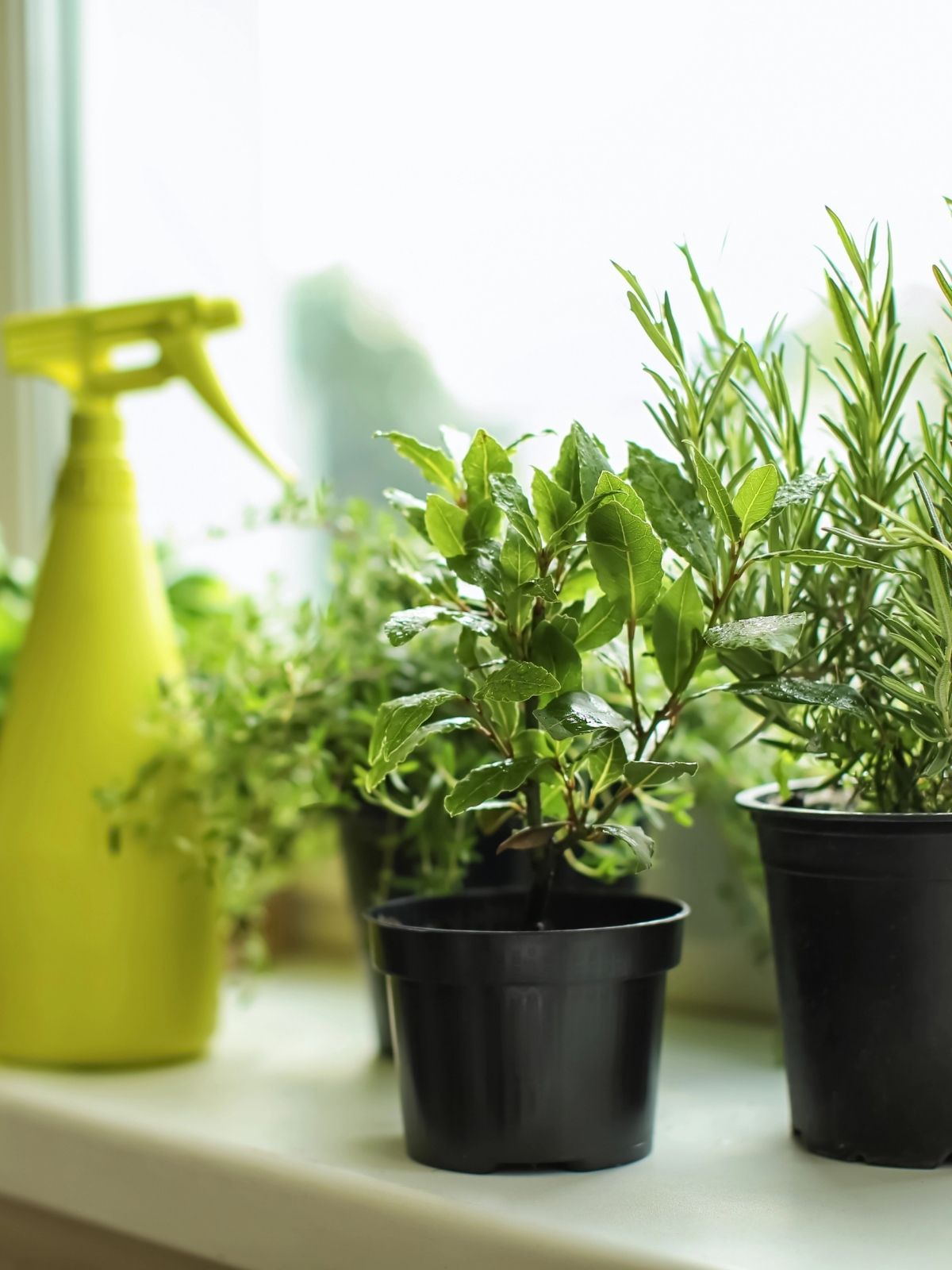
Growing herbs indoors is an easy way to bring fresh flavor, natural beauty, and a touch of wellness into your home.
Whether you’re looking to learn how to use fresh herbs for cooking, brighten your space, or save a little money, an indoor herb garden is a rewarding project.
Keep reading to learn how simple it is to get started! Next, be sure to check out my posts on How to Build your First Garden or Easy Vegetables to Grow for Beginners.
And don’t forget to grab your FREE Printable Herb Garden Tags below to add a fun finishing touch to your plants.
Table of Contents
6 Tips for How to Grow an Indoor Herb Garden Successfully
1. Pick the Right Herbs
Start with beginner-friendly herbs that thrive indoors:
- Basil, chives, mint, parsley, rosemary, thyme, cilantro, dill, oregano, sage, lemongrass, chervil, bay laurel.
- Mint spreads fast—plant it in its own container to avoid crowding other herbs. Read my post on How to Grow Mint in a Bucket for even more information!
- Woody herbs (e.g., rosemary, thyme, oregano): prefer drier soil; soft-leaved (e.g., basil, parsley): prefer evenly moist conditions .
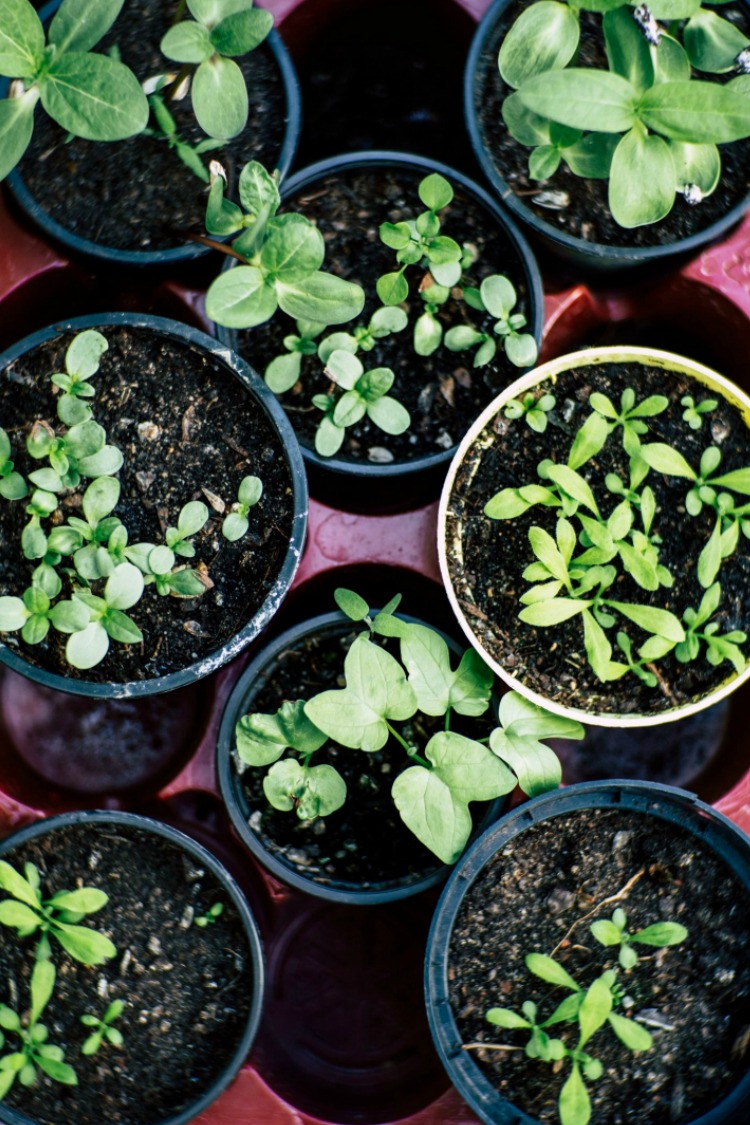
2. Choose the Right Spot
- Find a south- or west-facing window that gets at least 6 hours of sunlight per day.
- Use LED grow lights to simulate daylight—especially helpful in winter or dim rooms
3. Choose Containers & Soil Wisely
- Use pots with drainage holes—and place them on plastic/metal saucers to catch excess water.
- Consider biodegradable pots or mug jars with a layer of small rocks for drainage.
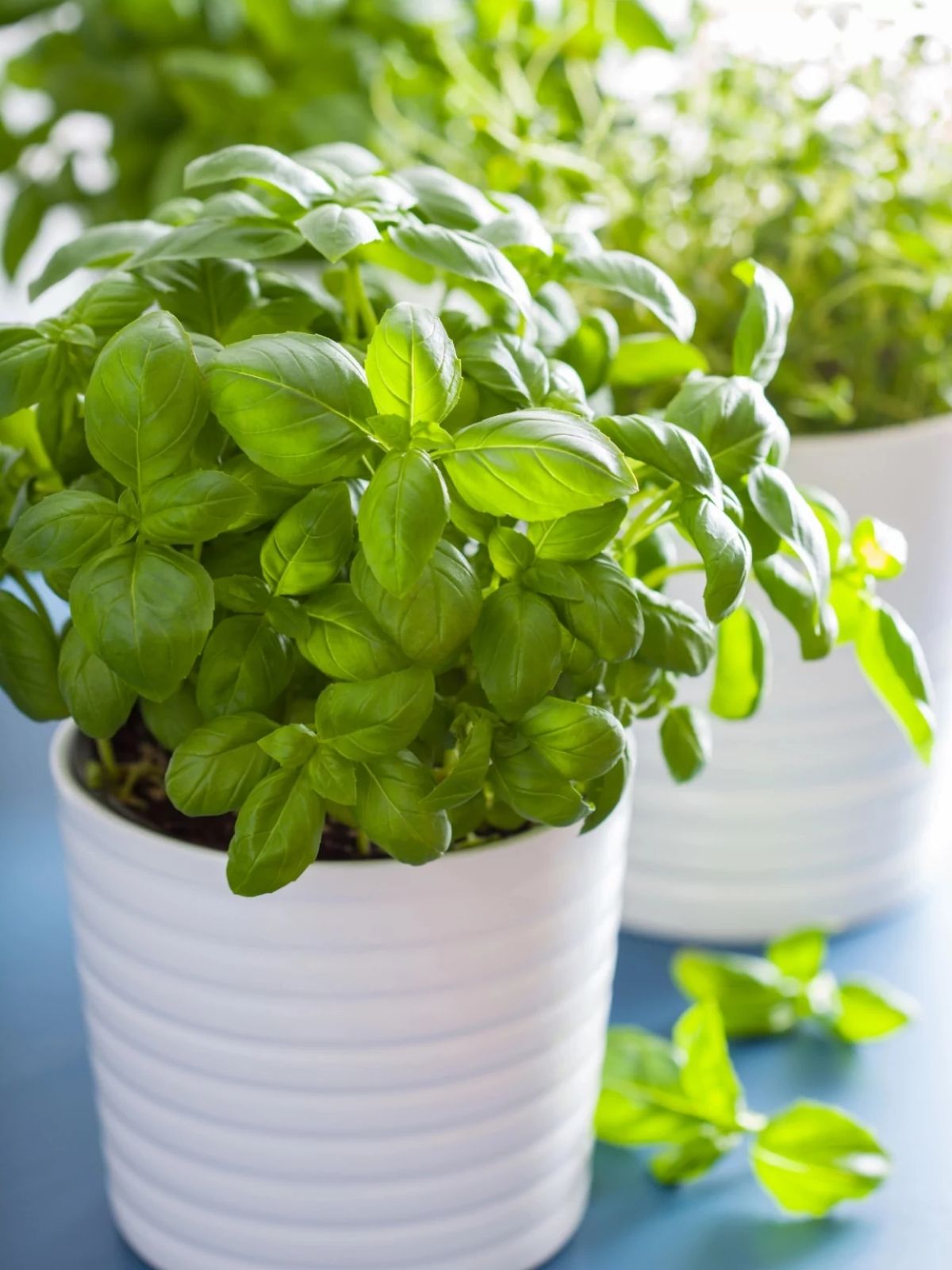
4. Water & Drain Correctly
- Water when topsoil feels dry to the touch—deep, but infrequent watering beats constant shallow moisture.
- Let excess water drain away to prevent root rot—don’t let herbs sit in soggy soil.
- Improve humidity by placing herbs on a tray of pebbles with water beneath.
5. Maintain Ideal Temperatures
- Keep indoor temps between 65–75 °F—ideal for most herbs. Basil prefers the warmer end of that range, especially at night.
- Keep plants away from cold window glass or drafty air vents .
6. Feed & Harvest Smartly
- Fertilize lightly (dilute, water-soluble fertilizer) once per week in the growing season; skip heavy feeding in winter.
- Snip leaves regularly, harvesting no more than one-third at a time—this promotes bushier growth .
- Pinch off flowers to maintain flavor and leaf production.
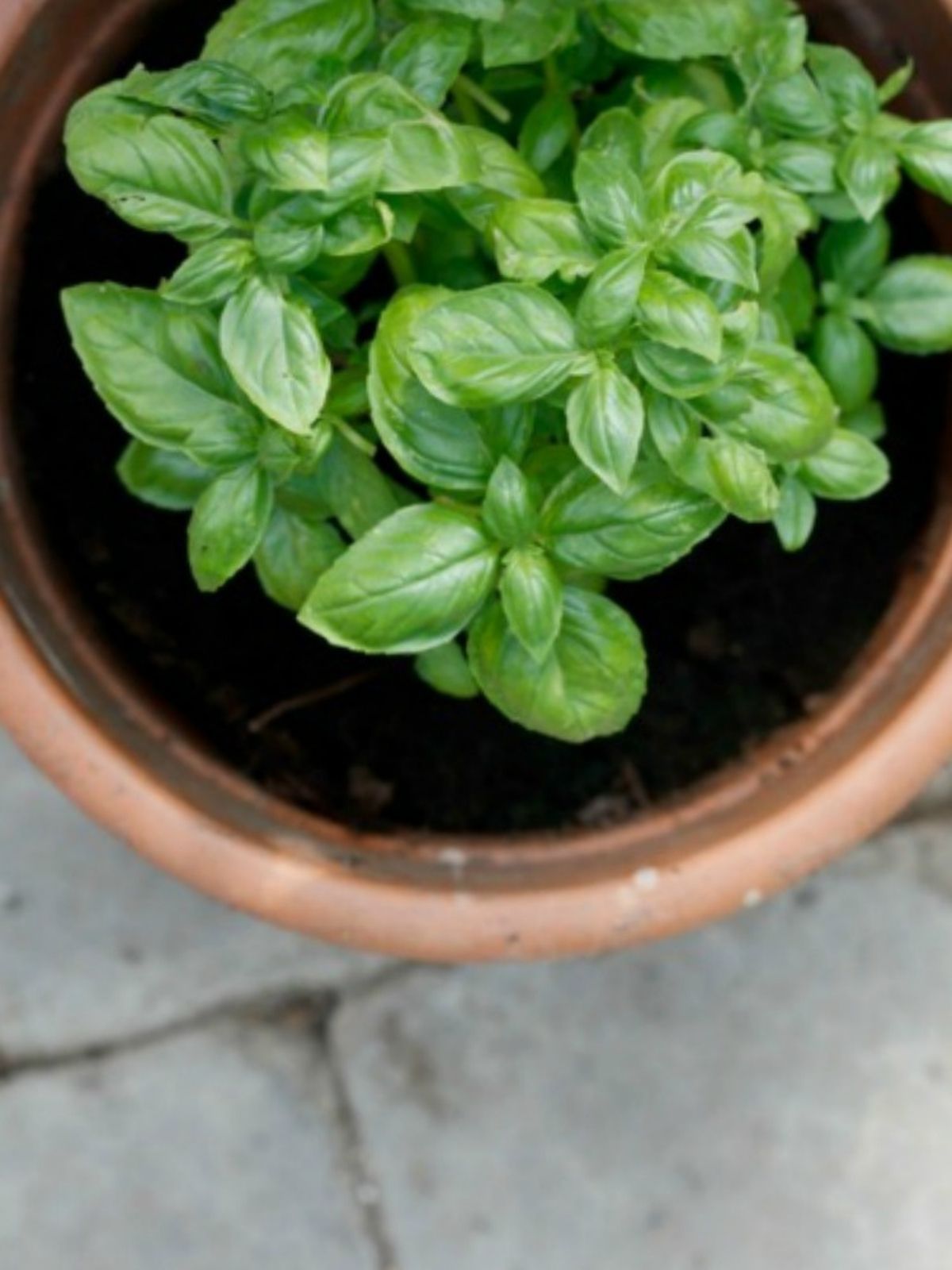
Creative Ideas for Growing an Indoor Herb Garden
- Start from young plants or cuttings if you want quick results—easier than starting herbs from seed.
- Grow vertical or use hanging jars and window boxes to save counter space.
- Label your herbs with chalkboard stakes, popsicle sticks, or fun printable tags.
- Try hydroponic systems like the smart hydroponic system for a futuristic, soil-free setup.
- Paint clay pots with chalkboard paint and write the names of the herbs in different colored chalk.
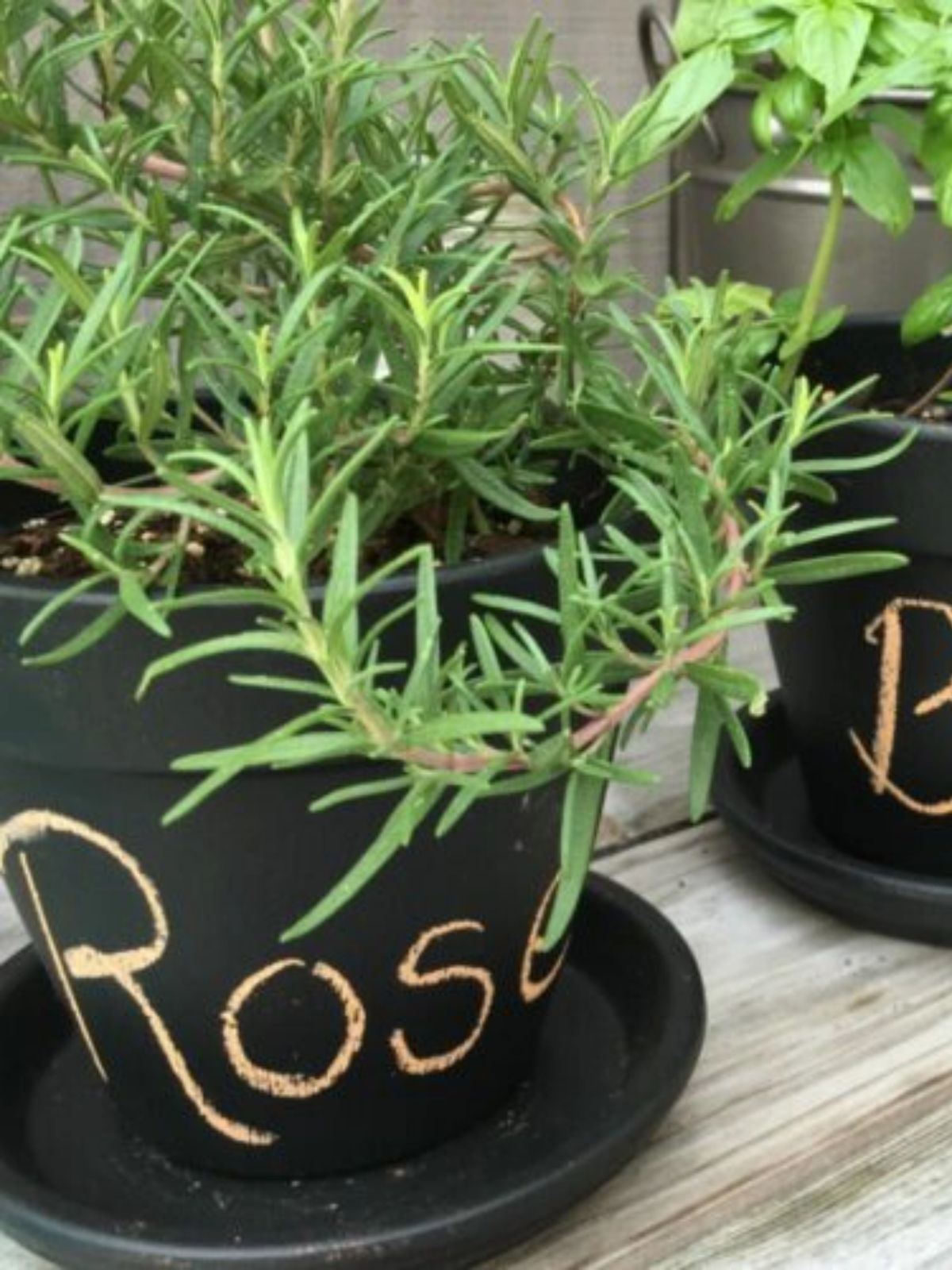
Free Printable Herb Garden Tags
Looking for an easy way to label and style your fresh herbs? Grab my FREE Printable Herb Garden Tags and make your indoor (or outdoor!) herb garden both beautiful and organized.

Indoor Herb Garden with Artificial Light
You can successfully grow an indoor herb garden using artificial light if natural sunlight is limited.
LED grow lights provide the full spectrum of light herbs need to thrive and can be adjusted to ensure consistent growth.
Herb Garden Light Requirements
- Provide 6 to 8 hours of bright, direct sunlight per day whenever possible.
- Use a south-facing or west-facing window for the best natural light.
- Supplement with LED grow lights if natural light is limited.
- Position grow lights 6 to 12 inches above the herbs.
- Keep grow lights on for 12 to 16 hours per day to mimic natural daylight.
- Rotate herb pots regularly to ensure even light exposure.
- Watch for signs of inadequate light (leggy growth, pale leaves) and adjust as needed.
Best Products for Growing an Indoor Herb Garden
More InformationMore InformationMore InformationMore Information
More InformationMore InformationMore InformationMore Information
Gardening FAQ's
To view the answers, simply click on the down arrow (⬇) next to each question. If you have any other questions not answered here, please leave a comment!
Most herbs need 6 to 8 hours of bright, direct sunlight daily to thrive indoors, with a south-facing window being ideal. If natural light is limited, supplement with LED grow lights to keep herbs healthy, flavorful, and strong.
For indoor herbs, choose pots that are 6 to 8 inches in diameter and have good drainage holes. This size is ideal for most herbs, providing enough space for root growth without taking up too much room on your windowsill or countertop.

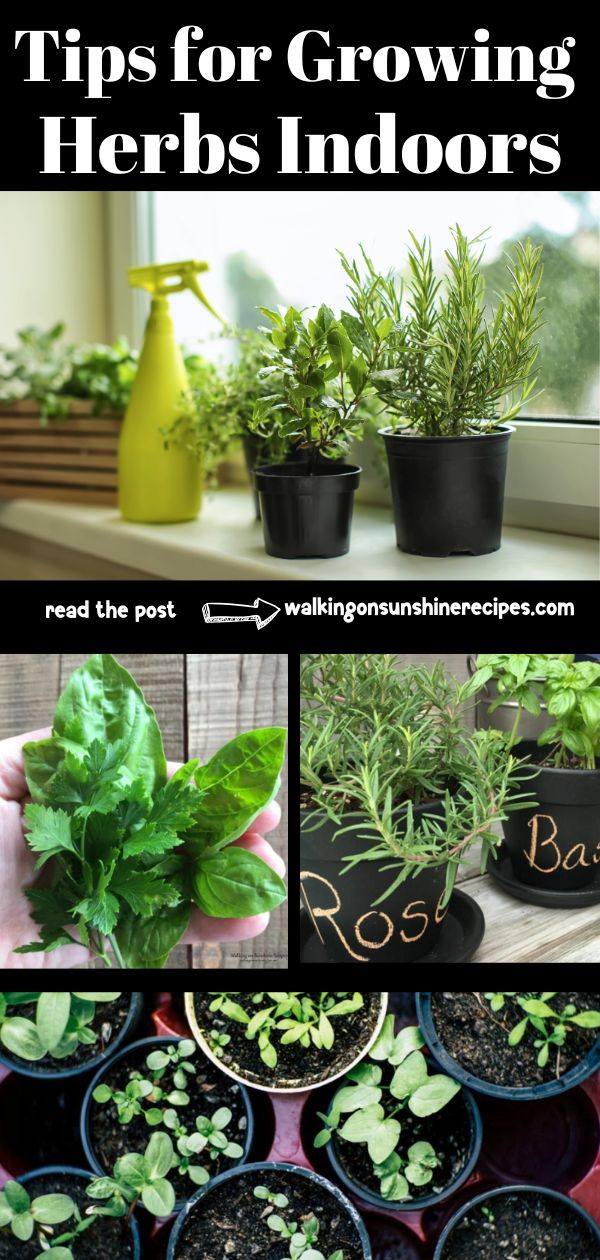

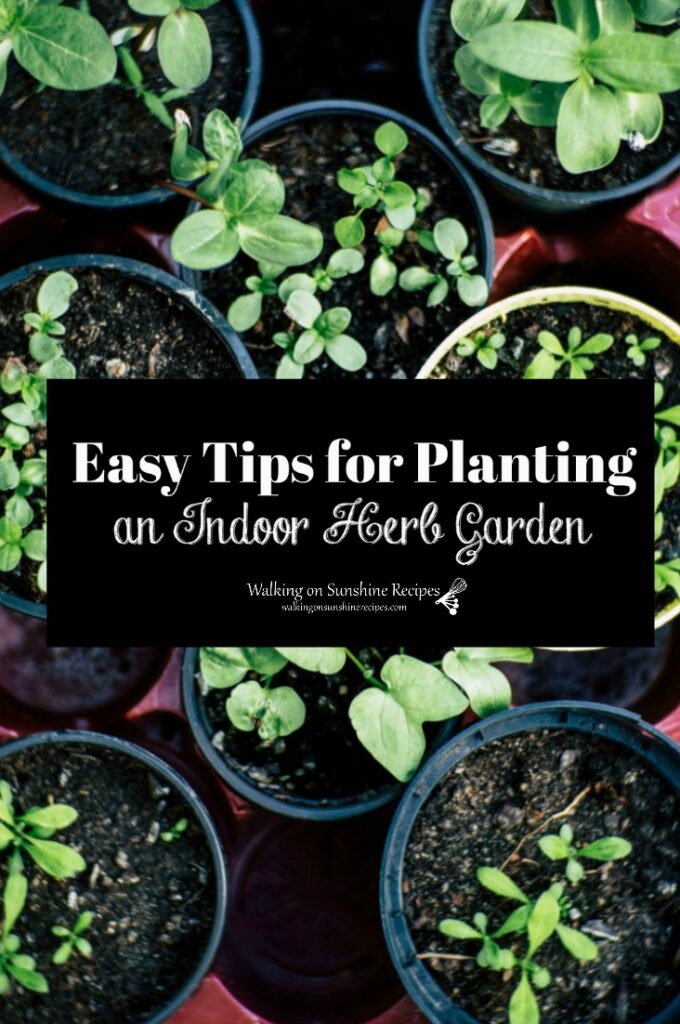
planting-an-indoor-herb-garden/
This post has been updated since it first appeared in 2020.


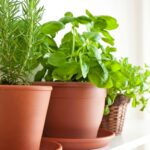
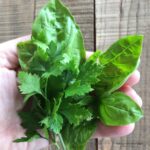
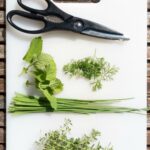
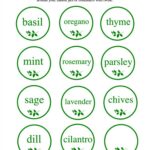
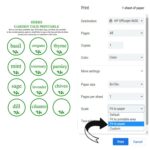
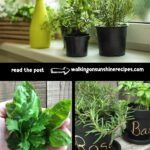








Comments
No Comments